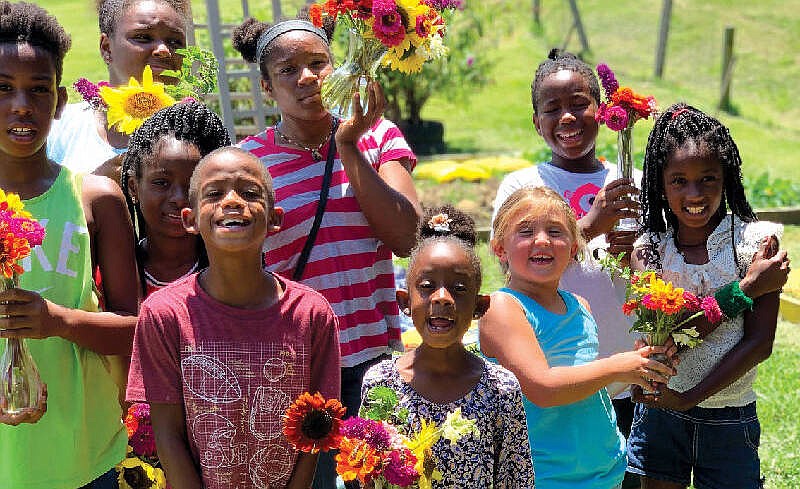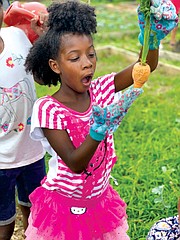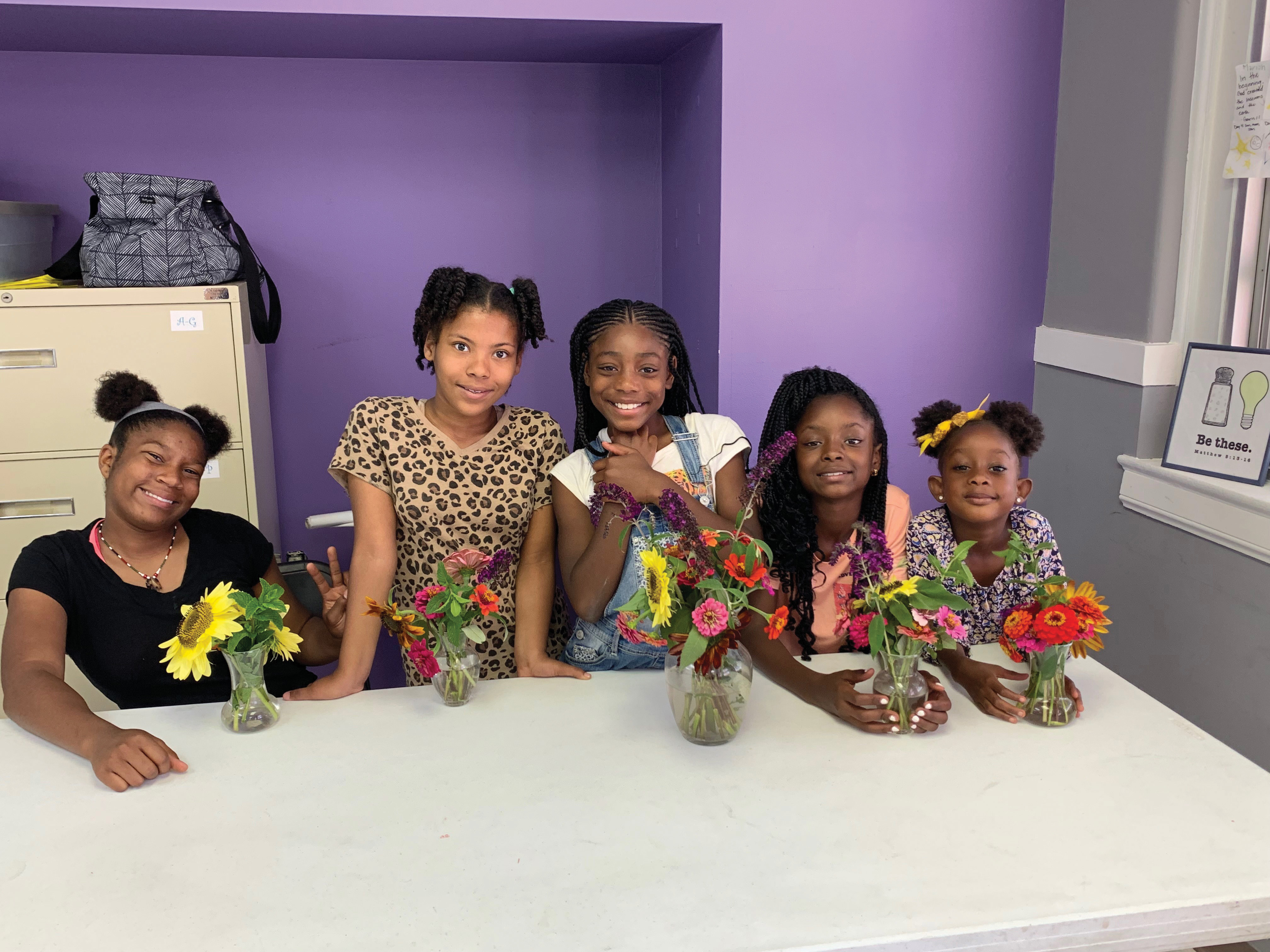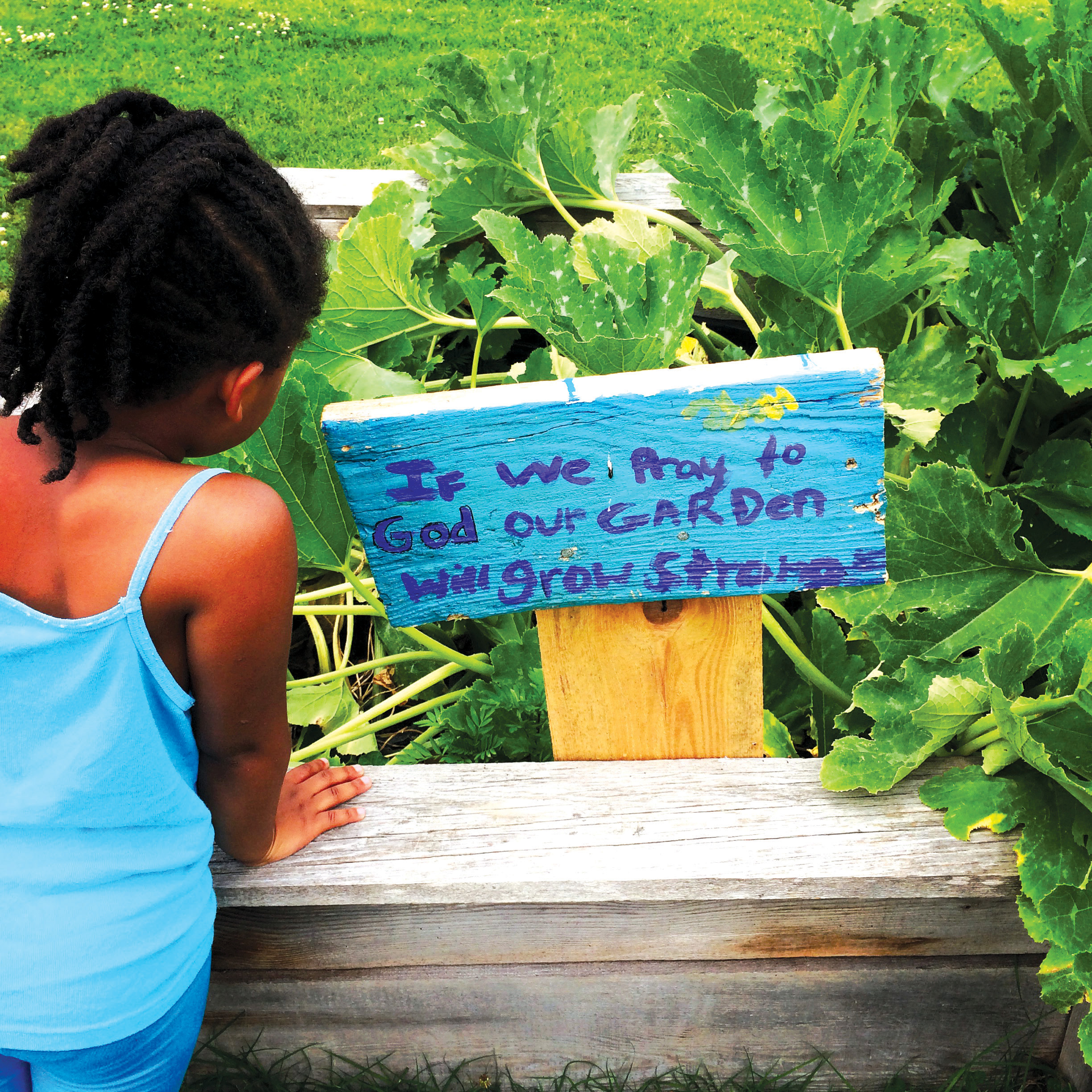When Amy Covington Farlett took up gardening with a group of kids from Chattanooga's Westside back in her early 20s, she knew as little as they did about growing plants, she says. A nurse at CHI Memorial's now-closed Westside health clinic, Farlett ran a weekly children's ministry in the neighborhood called Kids of Growth, and she incorporated gardening as an activity along with arts and crafts, Bible lessons and Zumba classes in the program's second year.
Step ONE, a program of the Hamilton County Health Department, funded a community garden in the Westside neighborhood in 2012, but when the leader of the project moved away, no one stepped up to take on the responsibility of the garden.
Growing food seemed like a natural fit for the Kids of Growth program, says Farlett. In the Bible, sowing seeds and reaping the harvest is a metaphor often used as a means of conveying wisdom and truth, fitting in with Memorial's mission as a Christian organization.
All gardening requires some degree of faith - faith that there will be enough sunlight and water for the plants to grow, that the work to plant and maintain the garden will eventually result in food to harvest or beauty to behold. For people who haven't had much else to put their faith in, tasting the literal fruits of their labor is like planting another type of seed: a seed of hope that manifests itself in different ways for different people.
Seeing the process of creating food, from planting a seed to watering and caring for the plant to harvesting and eating it, allows people to see that it's actually a pretty simple process, Farlett says. A garden can grow anywhere if you're willing to commit the time to plant and care for it and have the patience to see it through. And in an area where there's not an abundance of food available - the Westside saw its only walkable grocery store close last year - a garden can be a solution for a lack of access to fresh food.
Farlett's elementary school students maintain the garden in the middle of the College Hill Courts public housing complex. There's a fig tree, tomatoes, greens, okra and peppers. Located near the bus stop, the garden is in a place that's convenient for people to dig up a plant on their way home to cook with dinner.
The garden may not produce enough food to feed the entire 497-unit community, but it offers access and a connection to fresh produce and an understanding of how it grows. It offers the chance to experience the taste of a juicy ripe cherry tomato fresh from the vine, and the ability to connect that taste with what they learn about the nutritious qualities of fresh foods.
It also leads to a greater interest in learning more about nutrition and where food comes from. "It's neat to start off with a little seed that doesn't look significant at all, and then all of a sudden you have a tiny little bright green something poking out of the dirt," Farlett says.
When growing vegetables for the first time, some of the 6- or 7-year-old boys in her group had no idea what zucchini or squash looked like. The basil and mint they grew were also entirely unfamiliar.
Initially when asked to try these mystery foods, the response was, "I'm not eating that grass and dirt," she says. But after sitting in a circle and passing around chocolate cherry tomatoes, the kids were shoving them in their mouths for the rest of the summer.
The garden was established through a 2012 grant from the Hamilton County Health Department's Step ONE program, which started offering $1,000 teaching-garden grants in 2009 to anyone who wanted to start one at their school, church or community. Recipients also have the option to receive annual $250 grants for the next three years. Since 2009, 68 grants have been awarded throughout Hamilton County through the ongoing program, says Renee Craig, the health department's garden grant coordinator. It continues to award grants for around six to eight new gardens each year, and 15 are currently receiving the $250 grants.
The vision was originally for those small gardens to increase that community's understanding of the connection between quality of diet and quality of health, Craig says, adding that research shows that knowing how food grows and participating in growing it makes kids more open to eating fresh fruits and vegetables. But since the program launched in 2009, they've seen that the lessons go well beyond just healthy eating.
"As we listened to the stories and watched the people who were working in the gardens watched kids become leaders and watched kids learn about hard work, and adults who really sort of started taking responsibility and charge of their neighborhoods in their community or their church, we decided to update our vision statement so that it included not only learning about food and health and nutrition, but also about learning additional skills - communication, teamwork, responsibility - because those were the things we hadn't planned on. But they were just as valuable as the food that was growing out of the ground. I mean, we were growing literal leaders from children," says Craig.
She recalls one boy who was involved in the garden the program funded at the Emma Wheeler Homes housing development. Brandon Bacon, who was then the community director, was driving in to work around 8 a.m. one morning and saw a boy from the community out by the garden. It had previously been vandalized and Bacon thought that it was happening again, but as he approached, he realized the boy was watering the garden.
The boy, who was around 10 or 11 years old, had been asked to leave multiple after-school programs because his behavior was disruptive and the other kids were afraid of him. So he went by himself early every morning to water the plants when no one else was around. "He actually became a leader that summer and Brandon told me it evolved from there," Craig said of the boy's turning point with the garden. "That became a passion project for this young man, and the other kids really looked up to him."
Gardens can teach important lessons about patience and reaping the rewards of one's work, and can also be a way to make money. Farlett worked with middle and high school girls to create a second garden on the outskirts of the Westside neighborhood. Each girl was given her own garden bed in which to grow either food or flowers. They can sell their harvest at the farmers market, learning that the more time they put in, the more money they make.
"I've always said that each garden has its own personality, just because the people that work in the garden have their own personality and their own goals," says Craig.
Beyond their more practical purposes, gardens can also provide a sanctuary and creative outlet. One creative eighth grader used her garden bed as an art studio where her artistic and entrepreneurial skills bloomed side by side, Farlett says. The girl picked her vegetables and flowers and put them into arrangements, and set up a palette and canvas in the garden to paint them. She sold the paintings and her arrangements at the market, where a bride noticed her talent and asked her to do the floral arrangements for her wedding.
"That was just about the coolest thing ever for her," Farlett says. "It encouraged her to chase after those dreams that she had."
Planting a community garden is not going to solve all of a community's problems, but every garden is a success, says Joel Tippens, who aims to create a network of urban gardens throughout the city. Through the City Farms Grower Coalition, he hopes to train a group of people to plant and help one another maintain those gardens, avoiding the common problem of a garden's decline when it loses its leader.
Tippens' goal is to put anywhere from a quarter- to a half-acre of land into cultivation across 12-15 different addresses across town. Empty lots or church side yards that someone's currently paying to mow or otherwise maintain are just a few of the spaces that Tippens sees as potential gardens.
"I love taking a blank space like a parking lot and envisioning beds of veggies," he says. "Creating something from nothing has always fascinated me."
At The Bethlehem Center in Alton Park, he plans to teach people what grows well in this area, how to plan their gardens and how to start a garden from seed. "You can grow so much more in a lot less space than you think you needed," he says, adding that he wants to teach people to compost and recycle or repurpose materials as well. "There are so many ways to get people involved in very small-scale urban agriculture."
Tippens eventually hopes to start a farmers market at The Bethlehem Center. From talking to people who've been working to solve the area's food issues, like Sara McIntyre from Crabtree Farms, he says he knows there's a demand for more farmers markets but there aren't not enough growers to meet it. His network of urban farms would give people a way to earn a little money and provide greater access to fresh foods.
He's seen gardens succeed in the most unlikely places. At the corner of Watkins and East Main streets, he helped transform a 100-by-200-foot asphalt lot into a garden by growing plants inside stacks of tires. The garden is now maintained by people from more than a dozen different nations through Neema, a local resettlement outreach for refugees.
Gardens provide a common ground - a common ground where we all share a love for okra, Tippens says with a laugh.



